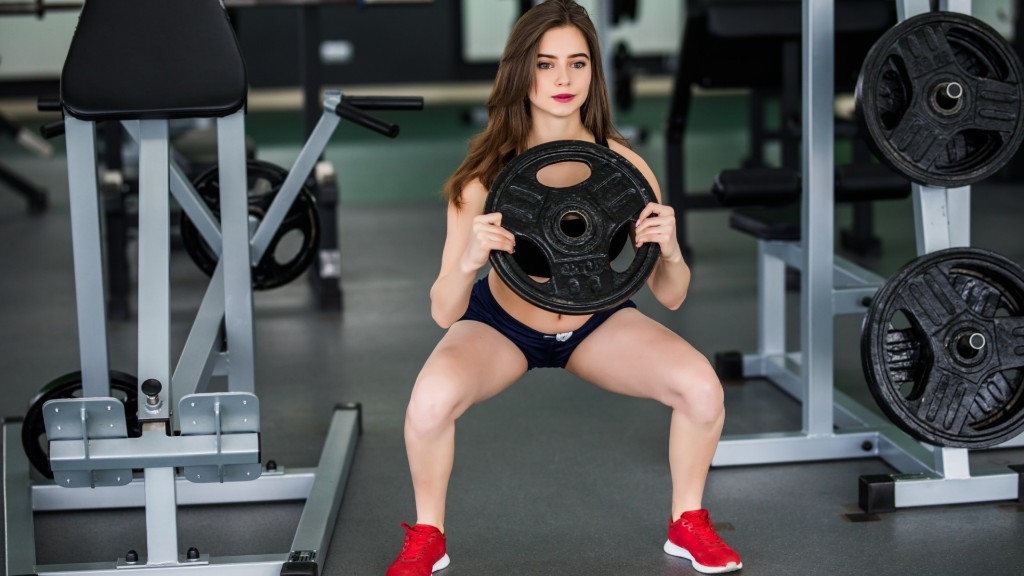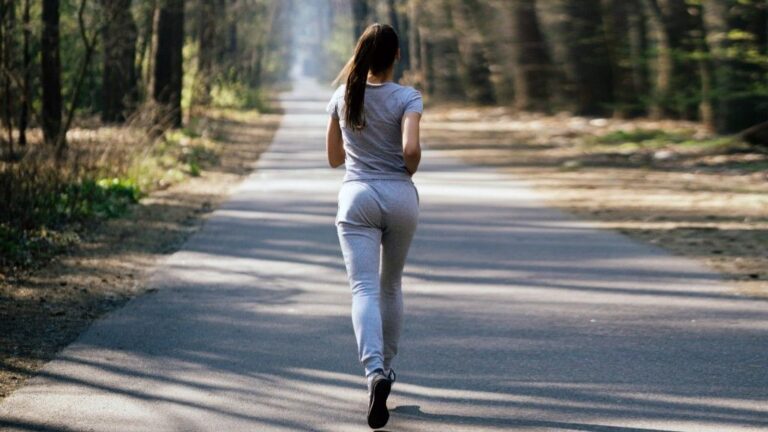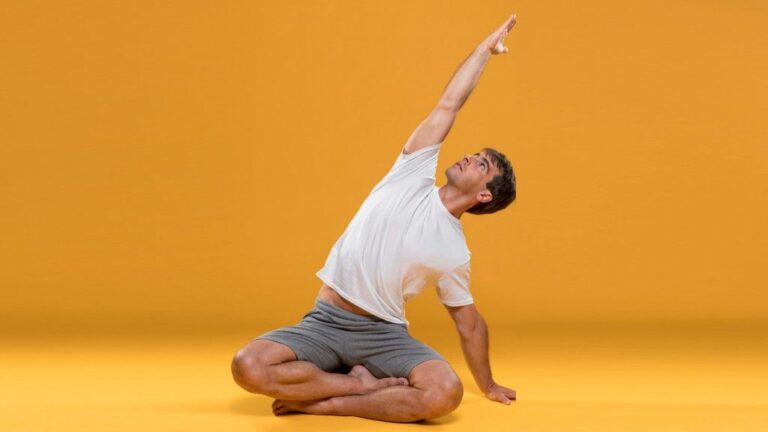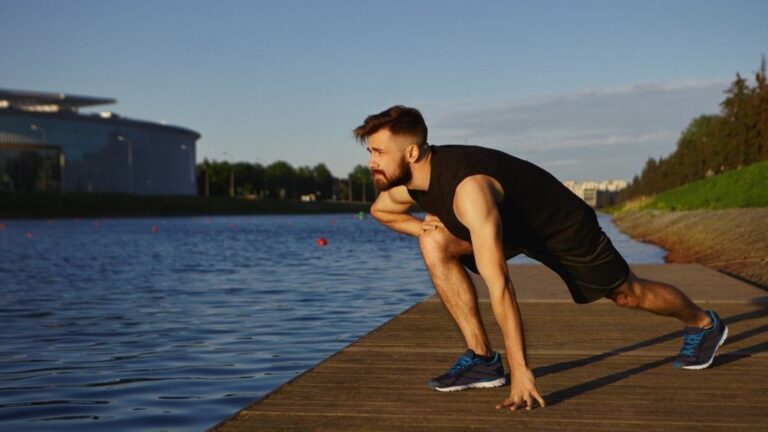Weight Plate Exercises for Women – Strength is beautiful. It’s not just about how your body looks—it’s about what it can do. Whether you’re carrying groceries, lifting a suitcase, or playing with your kids, functional strength makes everyday life easier and more enjoyable. A single weight plate is all you need to tone muscles, improve functional fitness, and boost your metabolism without bulking up.
These five exercises are designed to work multiple muscle groups at once, helping you build lean, strong muscles while enhancing balance, coordination, and endurance.
Table of Contents
1. Weight Plate Squats
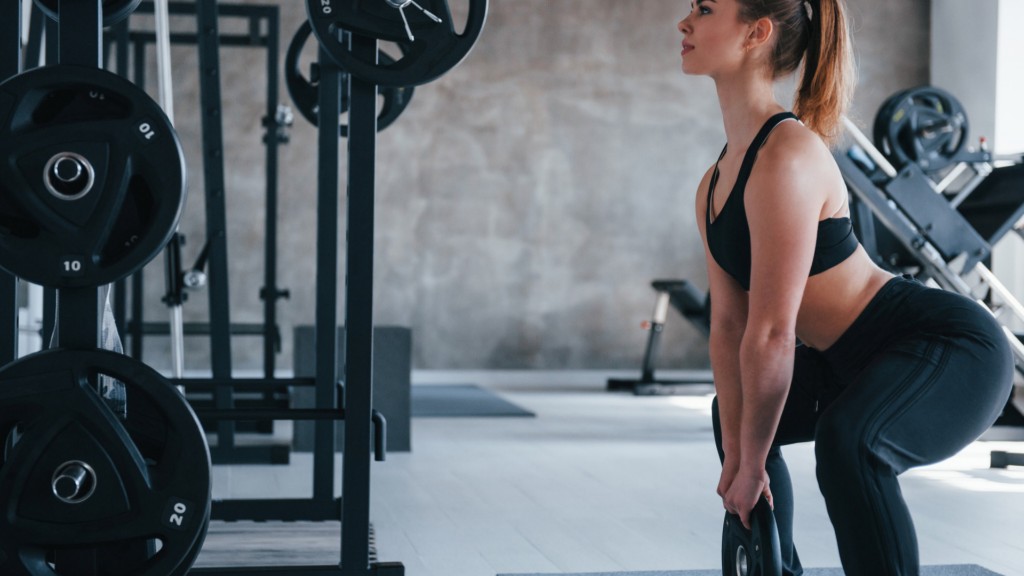
Weight plate squats are a powerhouse move for sculpting your lower body, targeting your quads, glutes, hamstrings, and core. Stand with feet shoulder-width apart, holding the weight plate at chest height with both hands. Keep your chest up and core engaged as you push your hips back and bend your knees to lower into a squat, then drive through your heels to return to standing.
Also Read: 5 Beginner-Friendly Walking Workouts That Target Belly Fat
Avoid rounding your back and keep your knees aligned with your toes—imagine sitting back into a chair. Beginners can perform bodyweight squats or use a lighter weight plate, while advanced lifters can increase the weight or add a pulse at the bottom for extra intensity.
2. Overhead Presses
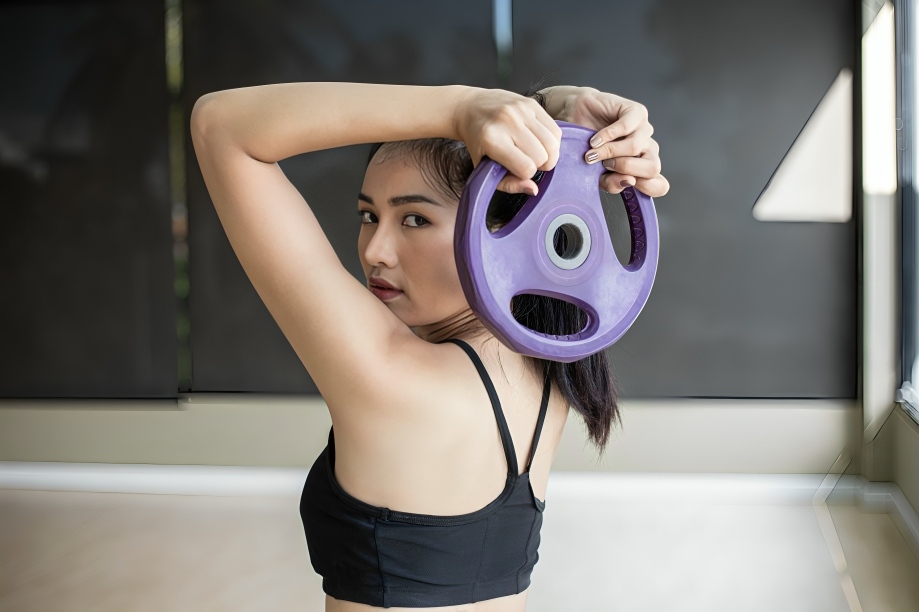
Overhead presses are a fantastic exercise for defining your shoulders, triceps, and upper back while engaging your core for stability. Stand with feet hip-width apart, holding the weight plate at shoulder height with both hands. Press the plate overhead until your arms are fully extended, then lower it back down with control.
Keep your shoulders relaxed, avoid arching your back, and engage your core throughout the movement. Beginners can perform seated presses or use a lighter weight plate, while more experienced lifters can increase the weight or slow down the movement to maximize time under tension.
3. Russian Twists
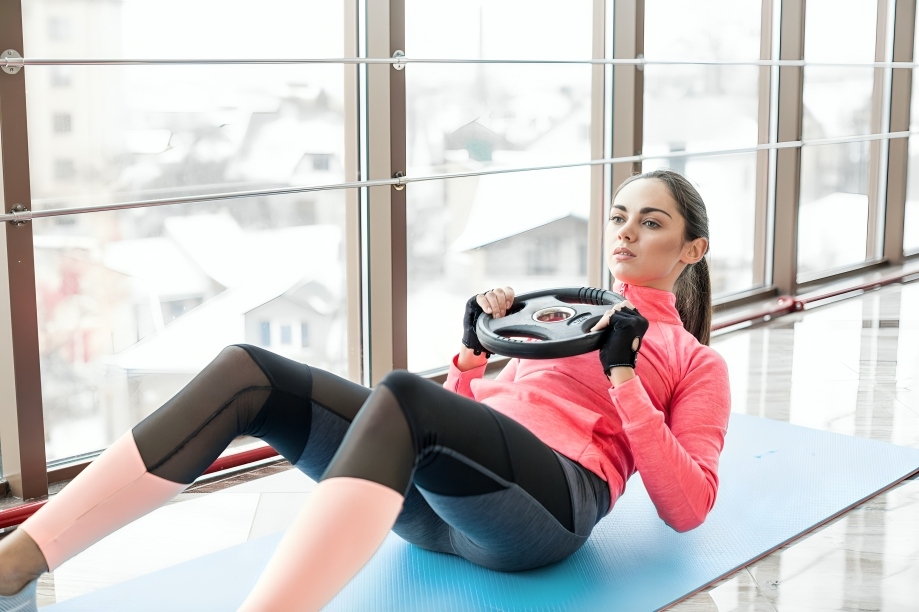
Russian twists are a dynamic rotational exercise that torches your obliques, rectus abdominis, and deep core muscles for a defined midsection. Sit on the floor with knees bent, leaning back slightly to create a V-shape with your thighs. Hold the weight plate with both hands and twist your torso to one side, tapping the plate on the floor beside your hip, then return to center and twist to the other side.
Also Read: 5 Best Quad Exercises for Leg Muscle and Strength Gains
Keep your chest lifted, core tight, and movements deliberate to maximize engagement. Beginners can perform the move without a weight plate or keep their feet on the ground for added stability, while advanced exercisers can increase the weight or perform the twists on a decline bench.
4. Bent-Over Rows
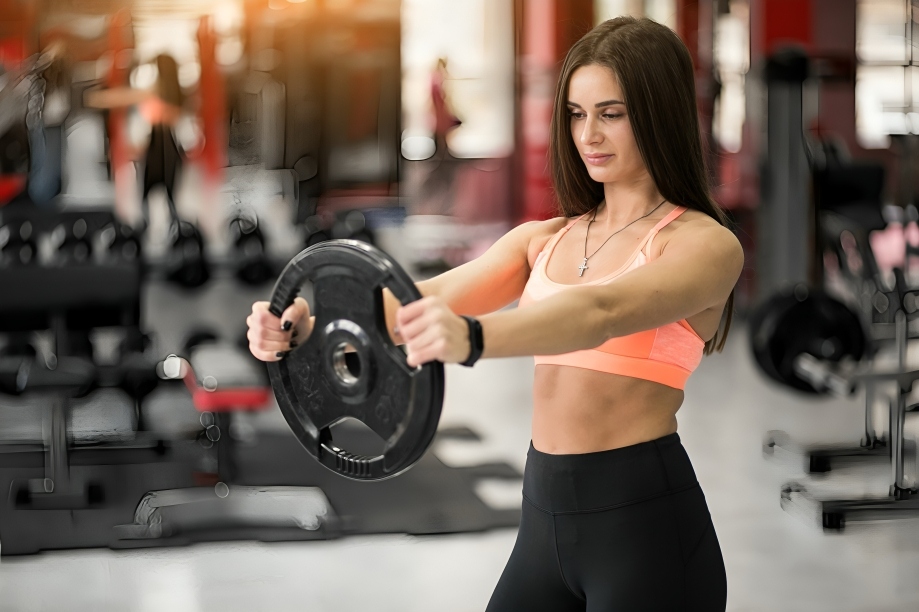
Bent-over rows are an excellent move for building a strong, defined back while engaging your biceps, shoulders, and core for stability. Stand with feet hip-width apart, holding the weight plate with both hands. Hinge forward at your hips, keeping your back flat and core engaged. Pull the plate toward your torso, squeezing your shoulder blades together, then lower it with control.
Also Read: 6 Simple Ab Exercises Women Can Do for Fast, Toned Results
Avoid rounding your back and focus on pulling with your back muscles, not your arms. Beginners can use a lighter weight plate or perform the move seated on a bench for added stability, while advanced lifters can increase the weight or slow down the lowering phase.
5. Lunges with Rotation
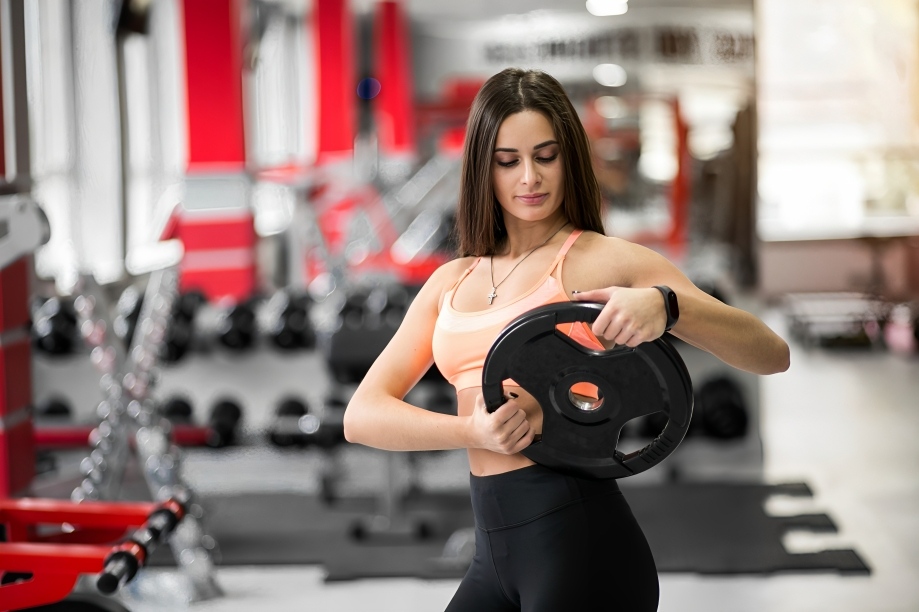
Lunges with rotation combine lower-body strength with core stability, targeting your quads, glutes, hamstrings, and obliques. Stand with feet hip-width apart, holding the weight plate at chest height with both hands. Step forward with one leg, lowering your hips until both knees are bent at 90 degrees.
As you lunge, rotate your torso and the weight plate toward the front leg, then return to center and step back to the starting position. Repeat on the other side. Keep your chest up, core engaged, and avoid letting your front knee extend past your toes. Beginners can perform stationary lunges or use no weight plate, while advanced exercisers can add weight or increase the depth of the lunge.

